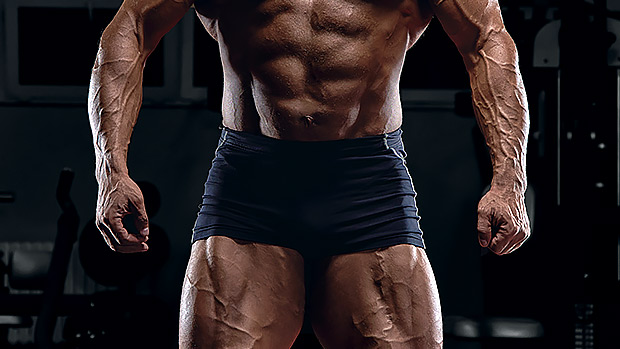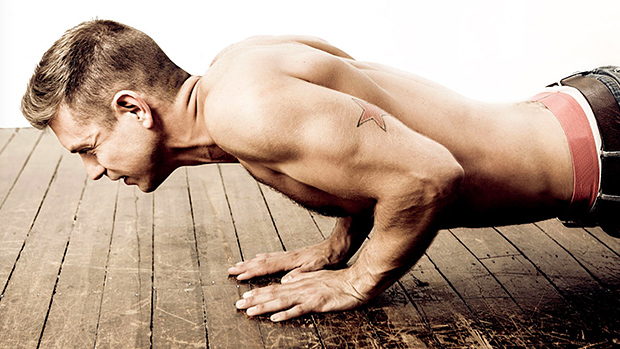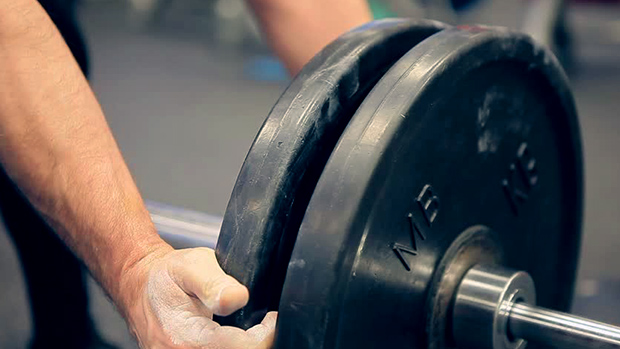Glute training is all the rage, but don't forget about the other side of your hips. Your hip adductors are the missing piece in your core and leg training.
Sure, if your gym has an adductor machine – the one where you sit and bring your legs together – you could get on it and creepily stare at the person training right in front of you, but here's a better option:
Side Plank with Adduction
How to Do It
- Grab a bench that has some space underneath or use a rack.
- Get a bar pad in place if you're using a rack. You've got the option of using one of the safety bars (as shown), or placing a barbell about knee-height off the floor. In any case, put some padding on it for your legs.
- Position a foam pad for below your elbow. Set this as close to the bar as needed.
- Set up in a basic side plank position with your elbow stacked firmly under your shoulder and with your leg on top of the bar or bench.
- Before you begin, take note of where the bar will hit your legs. The higher it is on your leg, the easier this exercise will be. Begin around knee height for the easiest version and progress to shin height for the hardest.
- Raise your hip and lower leg off the floor. Keeping a nice straight line from your head to tail, lift your bottom leg towards your top. This is straight-leg adduction.
- Don't let your hamstrings do the work. Try to keep both your feet pointing straight ahead. Think about pulling your toes together rather than your heels.
- Shoot for 10-20 reps. If you're not able to get at least 10 reps, move the bar or bench closer together to reduce the lever arm on that leg.
Why You Need This Exercise
Structural balance is important. When muscles that pull in one direction are stronger than muscles that pull in the opposite direction, you'll get all kinds of problems.
Just as it's important for your quads and hammies to be well balanced, it's important for the muscles on the outside and inside of your hips to be balanced.
The more you work your glutes doing all those booty band and cable exercises (ABDuction-focused), the more you need to be doing ADDuction-focused exercises like this.
Not worried about groin strains and hernias? Well, weak adductors can also hold back your glute gains. If the muscles supporting joints and producing movement in one direction are weak, your body won't want to be adding to that structural imbalance by getting you even stronger in the opposite direction.
It's inefficient and can lead to injury.
If you've been working hard on your "assets," great job. But start using one adduction (legs move together) exercise for every two abduction (legs spread apart) exercises. If that means six sets of the abductor machine followed by three sets of the adduction machine, then so be it. But this is better and more challenging!




